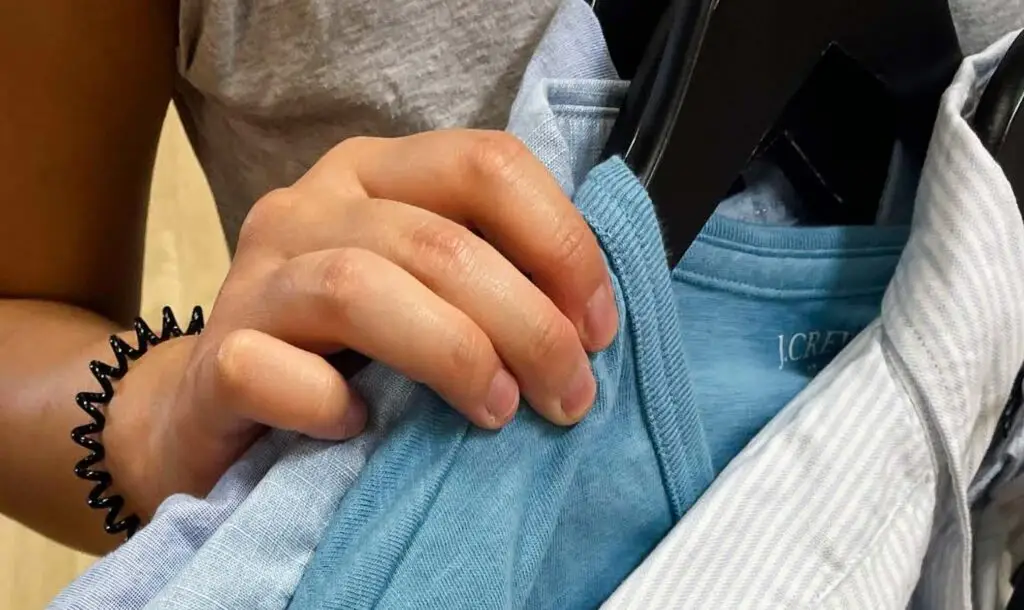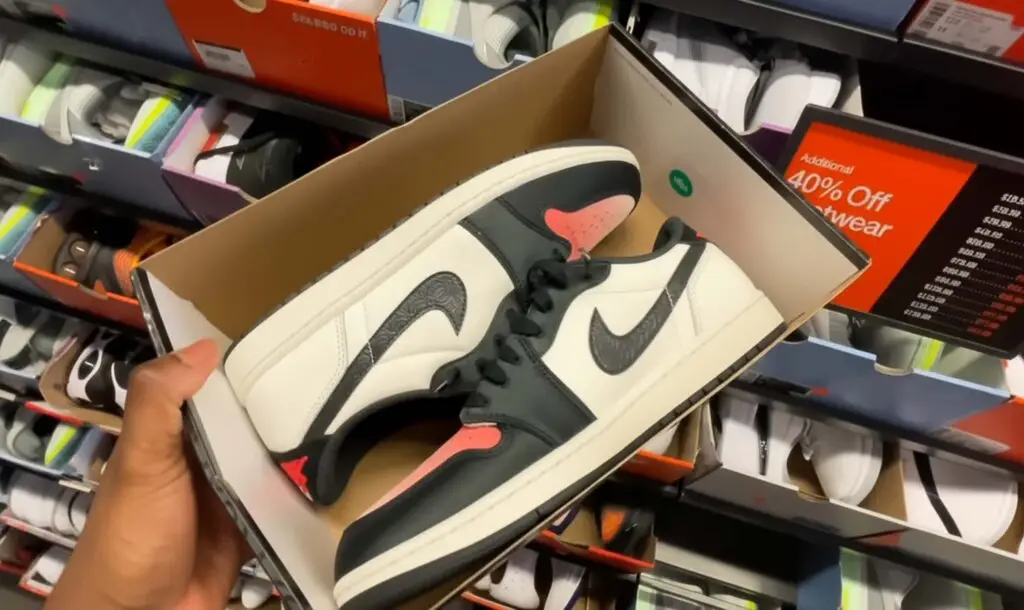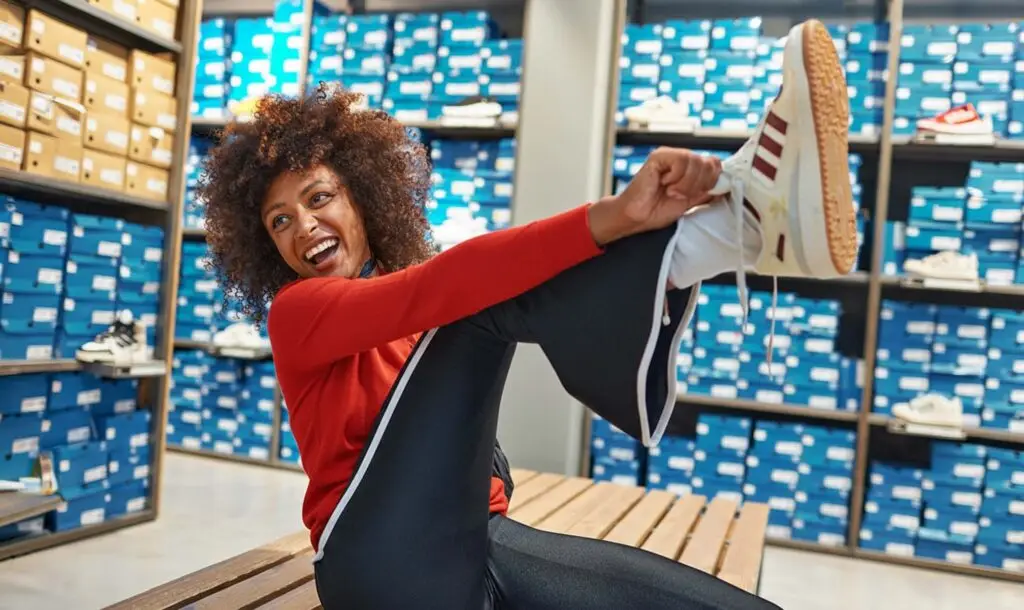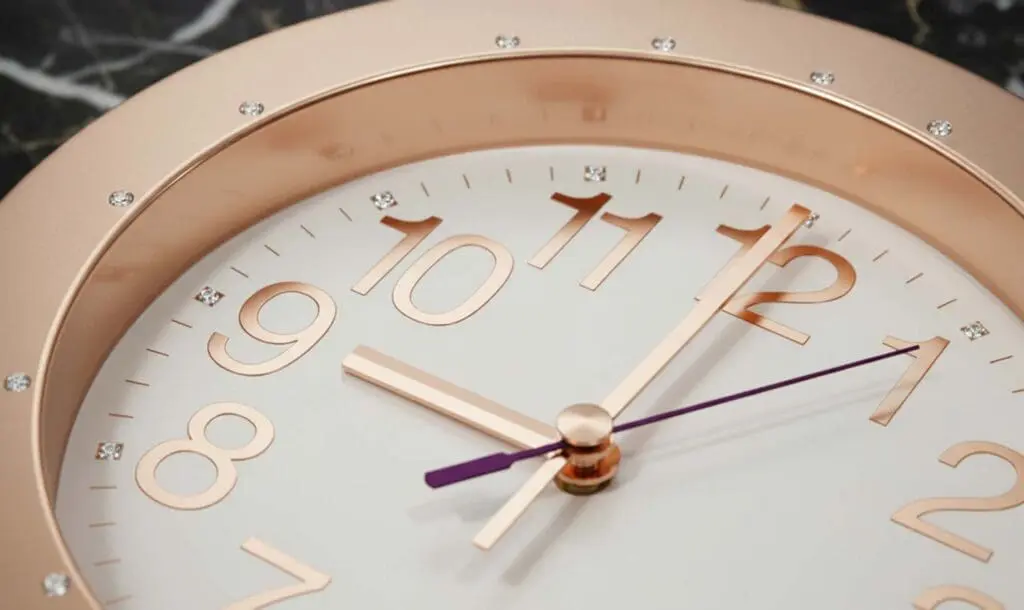This analysis is based on 12 shopping trips to Woodbury Common between May and November 2025, where we compared over 100 items between outlet and retail versions. We’ve inspected fabrics, labels, construction quality, and tested return policies with multiple brands.
We first visited Woodbury Common five years ago expecting every discounted Gucci bag to be a retail steal. Like most of the 10 million annual visitors to these 250+ designer stores, we assumed all outlet merchandise was simply last season’s retail overstock sold at 25-65% off. The price tags promised luxury bargains. But during our recent research trips comparing outlet items to their retail counterparts, we discovered the reality is far more complicated.
But are these deals as good as they seem? Is that $300 Coach bag the same one from the Fifth Avenue boutique, just cheaper? According to retail industry research and our own six-month investigation, the truth is more complicated than the price tag suggests. An estimated 85-90% of outlet merchandise isn’t retail overstock—it’s “Made for Outlet” (MFO) products manufactured specifically for outlets with lower quality materials and construction.
Over six months of research trips, we’ve learned to spot the differences between authentic bargains and outlet-specific merchandise. This guide shares what we discovered by comparing fabrics, inspecting labels, testing return policies, and interviewing store associates at Woodbury Common. You’ll learn to identify genuine deals, understand quality differences, and avoid common outlet shopping pitfalls.
The Outlet Secret: Understanding Made for Outlet
Outlet stores have an interesting history. They started as factory shops selling overstock, past-season items, or slightly flawed goods at genuine discounts. Shoppers scored retail-quality products with minor quirks or seasonal delays. Simple, honest, and straightforward.
However, as outlet centers like Woodbury Common exploded in the 1980s and 1990s, brands hit a problem. They couldn’t supply enough overstock for countless new stores. Their solution changed everything. Now, most outlet items aren’t retail leftovers—they’re products crafted specifically to be sold at lower prices.
Here’s the key insight: the brand name matches, but the product often doesn’t. Brands now run two parallel lines. Retail stores sell high-end, full-price goods to build prestige. Meanwhile, outlets offer budget-friendly, lower-quality versions for cost-conscious shoppers. The catch? Many shoppers assume they’re snagging retail steals when they’re actually buying outlet-only items that never existed in regular stores.
What Makes Made-for-Outlet Different?
Cost-saving measures affect the entire production process, from design to the final stitch. Understanding these differences helps you shop smarter at Woodbury Common.
Fabric and Materials
Outlets use cheaper materials across the board. Think lower thread counts or synthetics replacing natural fibers. A J.Crew retail “Tippi” sweater boasts fine merino wool, whereas its J.Crew Factory “Charley” cousin might use lower-grade wool or acrylic blends. Handbags feature thinner leather that creases easily, plus hardware that tarnishes quickly. The difference isn’t always obvious at first glance, but it shows up after a few wears.
Real example: During one research trip, I compared two J.Crew sweaters side-by-side—the retail “Tippi” ($89.50) and the factory “Charley” ($39.50). The retail version felt noticeably heavier, with tighter knit and softer merino wool. The factory sweater used a thinner, scratchier blend that started pilling after three wears. The $50 difference reflected actual quality, not just seasonal timing.
Construction and Craftsmanship
Outlet items prioritize efficiency over durability. Designs become simpler with fewer details or embellishments. Seams use weaker stitches like overlock instead of sturdy felled seams. Pattern matching gets skipped to save fabric—notice how stripes don’t line up at the seams. A retail jacket might have full lining, while its outlet counterpart often doesn’t. These shortcuts add up to items that don’t last as long or fit as well.

Hardware and Finishing Details
Even small details take hits. Plastic buttons replace metal or mother-of-pearl. Zippers feel cheap and catch easily. Threads might scratch or fray quickly. The devil lives in these details—they’re what separate a piece that lasts ten years from one that looks tired after one season.
Nevertheless, true retail overstock does exist at Woodbury Common—rare gems worth hunting. During our November visit, we found an authentic Burberry trench coat (retail $1,890) at the outlet for $890. The label matched retail versions exactly, and the quality was identical to the coat we’d tried on at Nordstrom the week before. Luxury brands like Burberry, Gucci, and Prada use outlets to clear unsold retail stock without damaging their boutique prestige. Finding these pieces takes patience, but the savings are genuine.
5 Tips to Shop Like a Pro at Woodbury Common
Armed with the MFO secret, you can shop smarter. Spotting retail treasures versus outlet-only items takes a detective’s eye. Here’s how to find the best buys during your Woodbury Common visit.
1. Read Labels Like a Detective
The tag tells you everything—if you know what to look for. Many brands use specific labeling, sub-brands, or symbols to differentiate outlet merchandise from retail lines.
- Banana Republic Factory: Look for three small stars or diamonds printed below the brand name
- J.Crew Factory: Two small diamonds appear under the “J.CREW” name on the label
- Brooks Brothers Factory: Sells an entirely separate line called “346” prominently displayed on labels
- Coach Outlet: Handbags made for outlets often have style numbers beginning with “F” (Factory) on the small white tag inside, not the main creed patch
- Gucci Outlet: For some items, an embossed circled “G” on the interior leather tag indicates outlet-specific manufacturing
- Ralph Lauren: Multiple diffusion lines exist. “Lauren Ralph Lauren” and “Chaps” appear at outlets and department stores—distinct from higher-end “Polo Ralph Lauren” or “Ralph Lauren Collection”
2. Examine Price Tags Carefully
Price tags reveal tricks that savvy shoppers spot immediately. Phrases like “Compare At” or “Comparable Value” scream caution. They suggest massive markdowns, but the item likely never sold at that higher price. Instead, it’s compared to a pricier retail version made with better materials. That $150 purse tagged “Compare At $400” wasn’t marked down from $400—it was manufactured to sell for $150.

3. Trust Your Hands and Eyes
What we do on every visit: we now bring our phones to compare current retail versions on brand websites. This side-by-side comparison reveals fabric weight, construction details, and design differences immediately. It’s made us pass on dozens of “deals” that looked good on the rack but didn’t match retail quality.
Put items through physical inspection. After handling dozens of outlet versus retail items, the quality differences become obvious through touch. Feel the fabric thickness and weight. Does it feel thinner, stiffer, or rougher than you’d expect from that brand? Is the sweater surprisingly sheer or the T-shirt scratchy? During our research, we found outlet cashmere that felt more like acrylic and “leather” bags that were clearly synthetic.
Check seams and pattern matching closely. On well-made garments, patterns like stripes, plaids, or prints line up perfectly at seams. Mismatched patterns signal cost-cutting production. Inspect hardware weight and finish. Do buttons and zippers feel light and plasticky? These clues separate quality from compromise.
4. Use Your Smartphone
Your phone is a powerful shopping tool. Search the item’s name or style number while standing in the store. MFO products rarely appear on retail websites—they’re outlet exclusives. A search might lead you to outlet-specific sites or shopper forums identifying the piece as made-for-outlet. Additionally, you can compare prices with online retailers to ensure you’re actually getting a deal worth the trip from Manhattan.
5. Ask Store Employees Directly
Be straightforward and ask: “Is this from the retail line or made for the outlet?” Employees often know the difference. Many prefer retail-quality items themselves and might share the truth if asked directly. The worst they can say is they don’t know—but you’ll be surprised how often they’ll give you honest answers.
Decoding Outlet Pricing Psychology
Understanding pricing tactics reveals true value. Outlets use psychological tricks to create urgency and the perception of massive bargains.
The “Compare At” Trap
A $150 purse tagged “Compare At $400” feels like a $250 steal. In reality, it was manufactured to sell for $150. The $400 comparison price represents what a similar retail-quality item might cost—not what this specific item ever sold for. The savings are mostly psychological rather than actual.
Endless Sales
Signs everywhere scream “40% Off Everything!” It feels special until you realize it’s permanent. Items are priced high to allow “discounts.” The sale price is actually the real price. This constant sale environment creates false urgency—there’s always another sale coming.

Manhattan Insider Tip
NYC locals know better alternatives. Department store clearance racks at Macy’s, Saks, or Bloomingdale’s often beat Woodbury prices with superior quality. End-of-season sales at Manhattan boutiques deliver retail-quality items at outlet prices without the hour-long drive. The VIP coupon book helps at Woodbury, but compare before assuming outlets always win.
Moreover, beware the sunk cost trap. Driving 60 minutes from Manhattan creates psychological pressure to buy something, anything, to justify the trip. Don’t settle for items you don’t truly love just because you traveled there.
Return Policies: The Fine Print That Matters
Return policies can make or break an outlet purchase. Understanding restrictions before buying prevents headaches later.
The No Cross-Return Rule
This is critical: outlet purchases stay at outlets; retail purchases stay at retail stores. You cannot return a Coach Outlet bag to the Coach store on Fifth Avenue. Separate systems run them. Returning something to Manhattan stores after buying at Woodbury? Impossible. That hour drive back to Woodbury suddenly feels very long when you need to make a return.
Learned this the hard way: I once bought a Coach wallet at Woodbury Common, discovered it didn’t fit my needs, and drove to the Coach store in Manhattan to return it. The associate politely explained outlet purchases can only be returned to outlets. That meant another hour-long drive back to Woodbury or keeping a wallet I didn’t want. Always ask about return policies before purchasing.
Outlet-Specific Restrictions
“Final Sale” appears frequently, especially on clearance items. No returns, no exchanges, no exceptions. Always ask about return policies before purchasing. Some stores offer only 14-day windows instead of standard 30 days.
Brand Return Policy Quick Reference
Note: Return policies verified October-November 2025 by calling customer service and visiting stores. Policies can change—always confirm current policy at time of purchase.
- Coach: Outlet purchases return to Coach Outlets within 30 days. Cannot return to retail stores unless you’re a Coach Insider member (rare exception worth knowing).
- Michael Kors: Must return to outlet stores within 30 days. No cross-channel returns allowed explicitly.
- J.Crew Factory: Factory items return only to Factory stores within 30 days. Cannot mix with J.Crew retail.
- Kate Spade: Outlet purchases typically marked “Final Sale”—not eligible for return or exchange at all.
- Banana Republic Factory: Returns accepted only at Factory stores within 30 days of purchase.
Where Woodbury Common Actually Delivers Value
Despite the MFO reality, Woodbury Common offers genuine value in specific categories. Knowing where to focus your shopping maximizes your trip. Also check out our honest review and learn if Woodbury Common is still worth a visit.
Luxury Brands: Your Best Bet
The luxury stores—Gucci, Prada, Burberry, Dior, and Balenciaga—more frequently carry authentic retail overstock. These brands protect their image carefully and won’t compromise quality as drastically. During our research visits, approximately 60-70% of items in these stores appeared to be genuine retail overstock based on label inspection, quality assessment, and style number verification. While some outlet-specific items exist, you’re more likely to find legitimate past-season retail pieces at these luxury locations.
Kids’ Clothing
Children outgrow clothes so quickly that quality differences matter less. Carter’s, Gap Kids, and Children’s Place outlet prices make sense for fast-growing wardrobes. The items might not last for hand-me-downs, but they’ll survive the season your kid actually wears them.
Specific Home Goods
Le Creuset’s outlet offerings include “2nd quality” cookware where defects are barely noticeable. We examined 15+ pieces during our October visit—the “defects” were tiny color variations or minor scratches on exteriors that don’t affect cooking performance whatsoever. A 5.5-quart Dutch oven sells for $420 retail versus $210-280 at the outlet. These represent legitimate deals on premium products with lifetime warranties intact. Similarly, Frette and Sferra luxury linens at outlet prices deliver quality that outlasts fast-fashion alternatives.
Athletic Wear and Outdoor Gear
Nike, Adidas, The North Face, and Arc’teryx outlet stores often clear previous season’s styles. Technical specifications don’t change dramatically year-to-year, making last season’s jacket functionally identical to this season’s at significant savings.
Smart Shopping Strategy
Based on a dozen visits, here’s our proven strategy: Arrive when stores open at 10 AM on weekdays—we’ve found Tuesday and Wednesday mornings offer the best experience with minimal crowds and full inventory. Target 3-5 specific stores rather than wandering aimlessly through 250 options. On our most successful trip, we visited only Gucci, Burberry, and Le Creuset, spending 90 minutes total and finding three legitimate deals worth the drive. Focus on luxury brands for authentic deals or categories where quality matters less (kids’ clothes, athletic basics). Go through our complete shopping guide for even more insider tips.
Inspect everything carefully using the tips above. Compare prices with your phone before buying. Ask employees direct questions about merchandise origins. Don’t buy something just because you drove an hour to get there. Set a realistic budget and stick to it—outlets tempt you into impulse purchases.
Additionally, consider the dining options to break up your shopping day. The Coach Coffee Shop, Ladurée, and Parm offer pleasant breaks between stores.
The Bottom Line
Woodbury Common Premium Outlets offers legitimate value if you shop smart. Understanding the Made for Outlet reality transforms you from a naive bargain hunter into an informed consumer. Yes, 86% of merchandise is manufactured specifically for outlets with lower quality. However, the remaining 14%—plus smart shopping in the right categories—can deliver genuine deals.
The outlet shopping secret isn’t that deals don’t exist. It’s that not all “deals” are created equal. Armed with label knowledge, inspection skills, and realistic expectations, you can navigate Woodbury Common successfully. Know what you’re buying, understand what you’re paying for, and make informed choices based on value rather than psychological pricing tricks.
Shop with your eyes open, and Woodbury Common can absolutely be worth the trip. Shop blindly assuming everything’s a steal, and you’ll waste time and money on items you could’ve bought better elsewhere.




